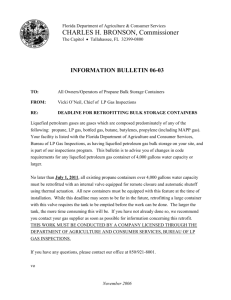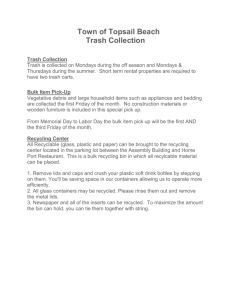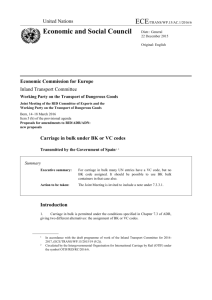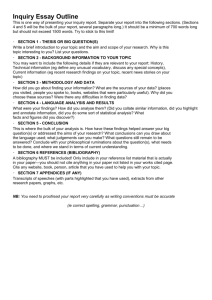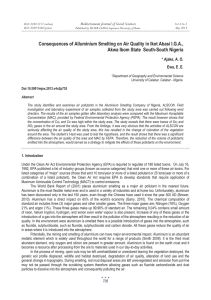UN/SCEGHS/19/INF
advertisement
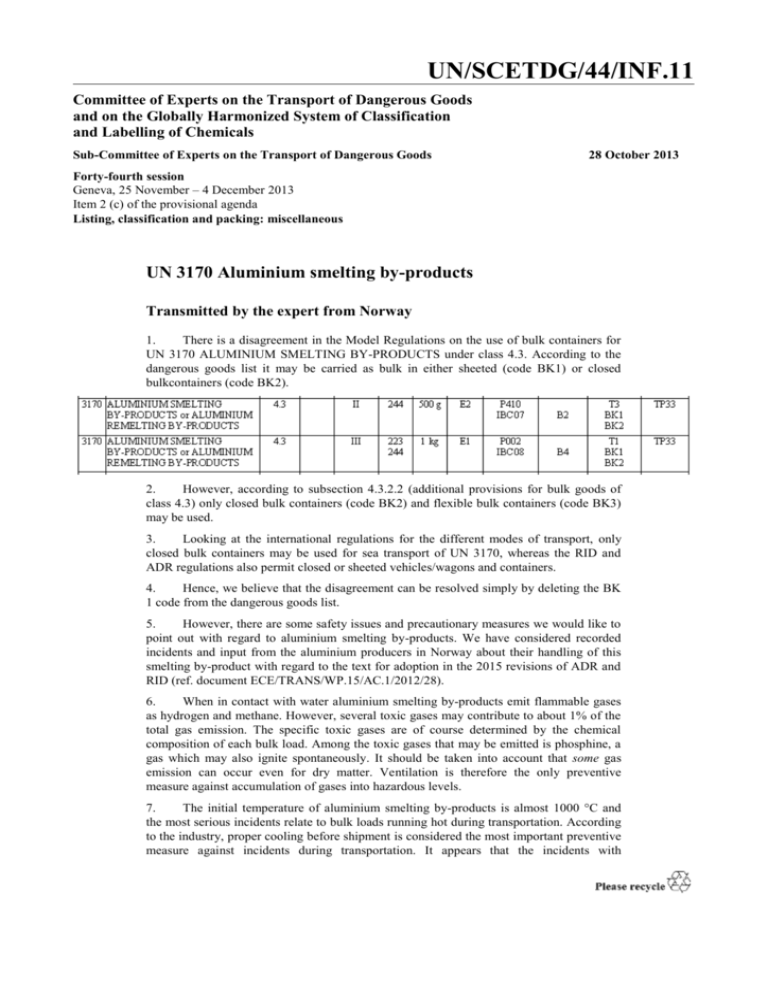
UN/SCETDG/44/INF.11 Committee of Experts on the Transport of Dangerous Goods and on the Globally Harmonized System of Classification and Labelling of Chemicals Sub-Committee of Experts on the Transport of Dangerous Goods 28 October 2013 Forty-fourth session Geneva, 25 November – 4 December 2013 Item 2 (c) of the provisional agenda Listing, classification and packing: miscellaneous UN 3170 Aluminium smelting by-products Transmitted by the expert from Norway 1. There is a disagreement in the Model Regulations on the use of bulk containers for UN 3170 ALUMINIUM SMELTING BY-PRODUCTS under class 4.3. According to the dangerous goods list it may be carried as bulk in either sheeted (code BK1) or closed bulkcontainers (code BK2). 2. However, according to subsection 4.3.2.2 (additional provisions for bulk goods of class 4.3) only closed bulk containers (code BK2) and flexible bulk containers (code BK3) may be used. 3. Looking at the international regulations for the different modes of transport, only closed bulk containers may be used for sea transport of UN 3170, whereas the RID and ADR regulations also permit closed or sheeted vehicles/wagons and containers. 4. Hence, we believe that the disagreement can be resolved simply by deleting the BK 1 code from the dangerous goods list. 5. However, there are some safety issues and precautionary measures we would like to point out with regard to aluminium smelting by-products. We have considered recorded incidents and input from the aluminium producers in Norway about their handling of this smelting by-product with regard to the text for adoption in the 2015 revisions of ADR and RID (ref. document ECE/TRANS/WP.15/AC.1/2012/28). 6. When in contact with water aluminium smelting by-products emit flammable gases as hydrogen and methane. However, several toxic gases may contribute to about 1% of the total gas emission. The specific toxic gases are of course determined by the chemical composition of each bulk load. Among the toxic gases that may be emitted is phosphine, a gas which may also ignite spontaneously. It should be taken into account that some gas emission can occur even for dry matter. Ventilation is therefore the only preventive measure against accumulation of gases into hazardous levels. 7. The initial temperature of aluminium smelting by-products is almost 1000 °C and the most serious incidents relate to bulk loads running hot during transportation. According to the industry, proper cooling before shipment is considered the most important preventive measure against incidents during transportation. It appears that the incidents with UN/SCETDG/44/INF.11 overheating have been caused by insufficient cooling at the loading site. After loading the problem worsens as the containment for transportation provides less ventilation and cooling. Moreover, water may condense on the inside walls of the containment due to the temperature difference with the surroundings, and thus fuel generation of gas and heat. 8. According to the industry, development of smoke has been observed in transport units that have stopped moving, for example in port terminals, and therefore subject to less ventilation than under movement. 9. Norway is of the opinion that the Model Regulations should be updated on this matter, and we would like to hear the views of interested parties on how to proceed. Our proposal is to 2 ˗ Introduce a new special provision for UN 3170 with a requirement for sufficient cooling before transportation ˗ Modify subsection 4.3.1.16.2. This provision addresses accumulation of gases, but only in flexible bulk containers. ˗ Delete the BK1 code in the dangerous goods list dangerous

